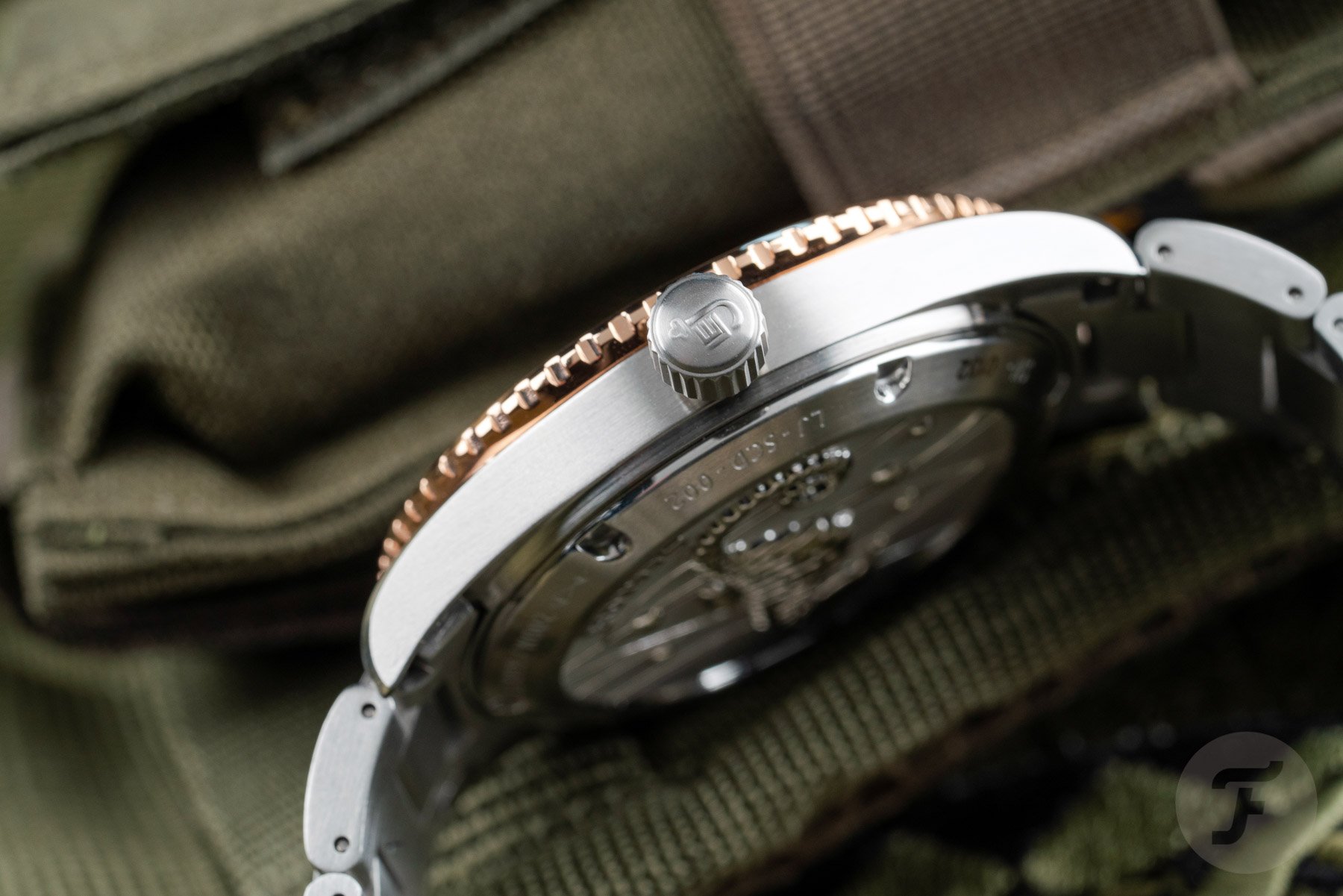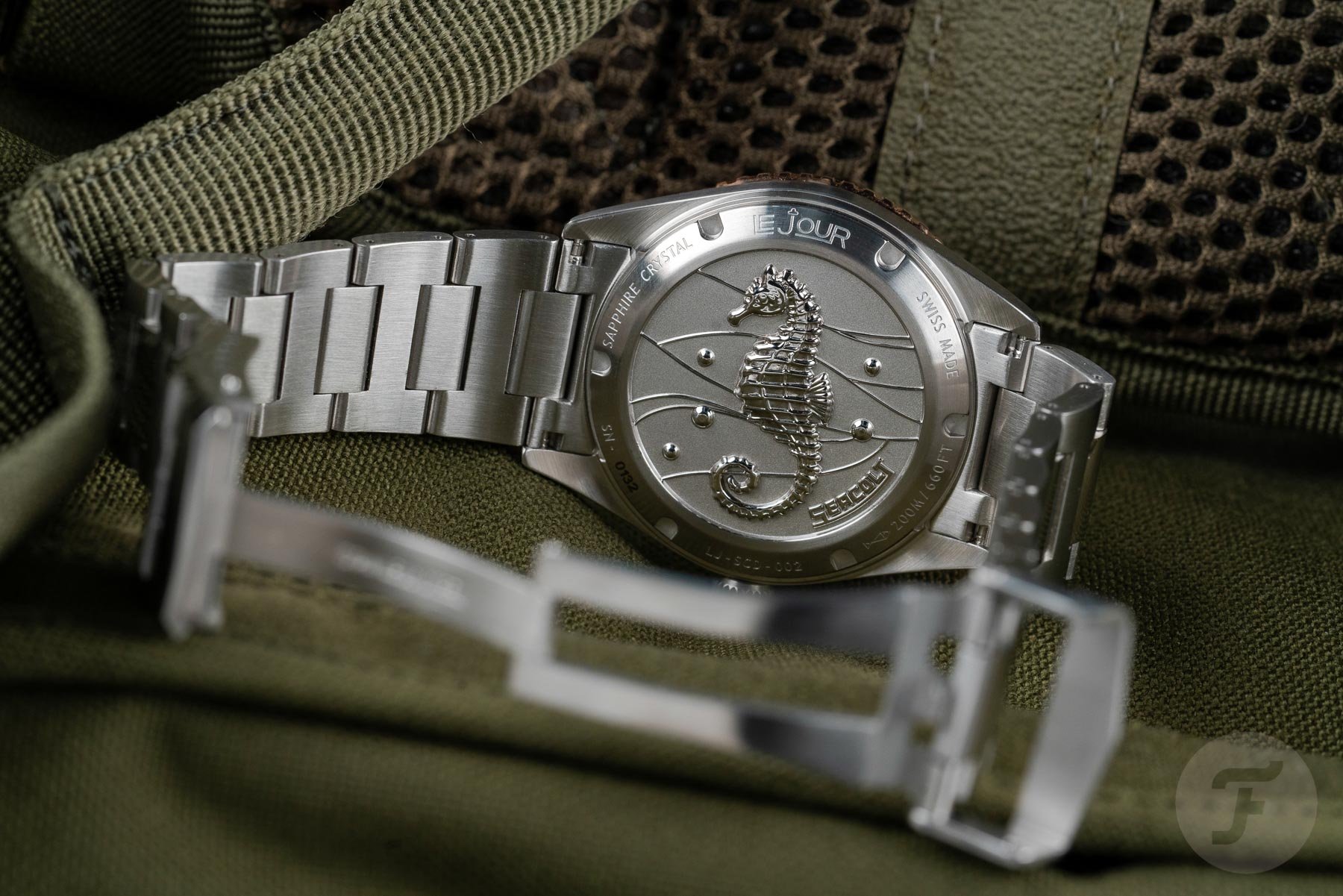Hands-On With The Le Jour Seacolt LJ-SCD-002 Dive Watch
In recent years we’ve seen a number of brands make a post-quartz-crisis comeback. Le Jour is one such brand. If you’re a fan of vintage watches, you may already be familiar with some of its offerings from the ’60s, ’70s, and ’80s. Whether it’s cool racing chronographs or dive watches, the brand has done it all. Le Jour’s recent comeback has seen the brand working hard to build a varied catalog of vintage-inspired timepieces with an exciting modern twist. One of the latest releases, the Seacolt dive watch, does just that. With plenty of old-school charm, it’s a modern feature-packed watch, which offers a ton of value for the price. But how do these watches hold up in today’s ultra-competitive watch market? With plenty of micro brand offerings available, the question remains of whether Le Jour’s contemporary offerings are worth your time and the contents of your wallet.
Mike and Tomas have already shown you some of their favorite vintage Le Jour watches (here, here and, here). But recently, I had a chance to wear the new Le Jour Seacolt for a few days, to get a first impression of the watch, and to try and answer the aforementioned questions. At first sight, the watch looks somewhat familiar (and I’ll get into why later in this review). But after a closer look, the eye starts to find small details that make it unique. Unlike some of the Vintage Diver models, which take inspiration from the brand’s back catalog, this model was designed as a modern diver by the team at Le Jour. Modern, yes, but with plenty of retro-inspired details that give this piece a contemporary yet timeless look. But you can see that from the pictures alone. What is it like actually wearing the watch?
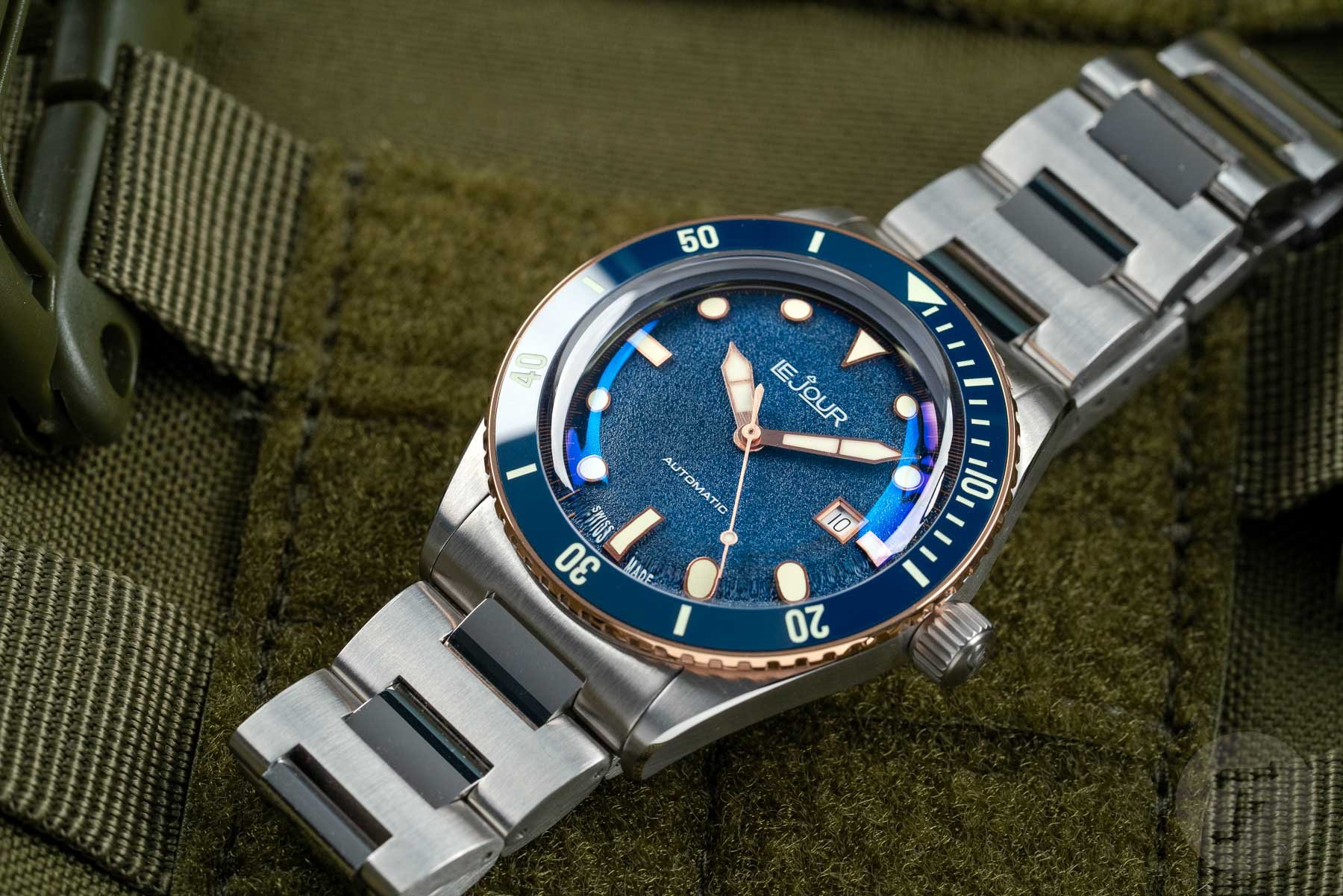
The Le Jour Seacolt LJ-SCD-002
Well, let’s find out! Le Jour produces the Seacolt in five different colors, including some different dial/bezel combinations. This includes dials in green, black, and blue with matching bezels, brown with a black bezel, and gray with a blue bezel. All five models feature the rose gold accents on the bezel’s edge, dial elements, and hands. I decided to go with the classic blue, which I think complements the rose gold accents nicely. The first thought upon removing the watch from its nice wooden box is that the fit and finish are those of a far more expensive watch. The Seacolt models retail for $850 (approximately €740) on the stainless steel bracelet. The bracelet is nice and solid, free of sharp edges, and not rattly in the slightest. It has a subtle taper, down from the solid end links to the milled clasp, which suits the retro look of the watch itself.
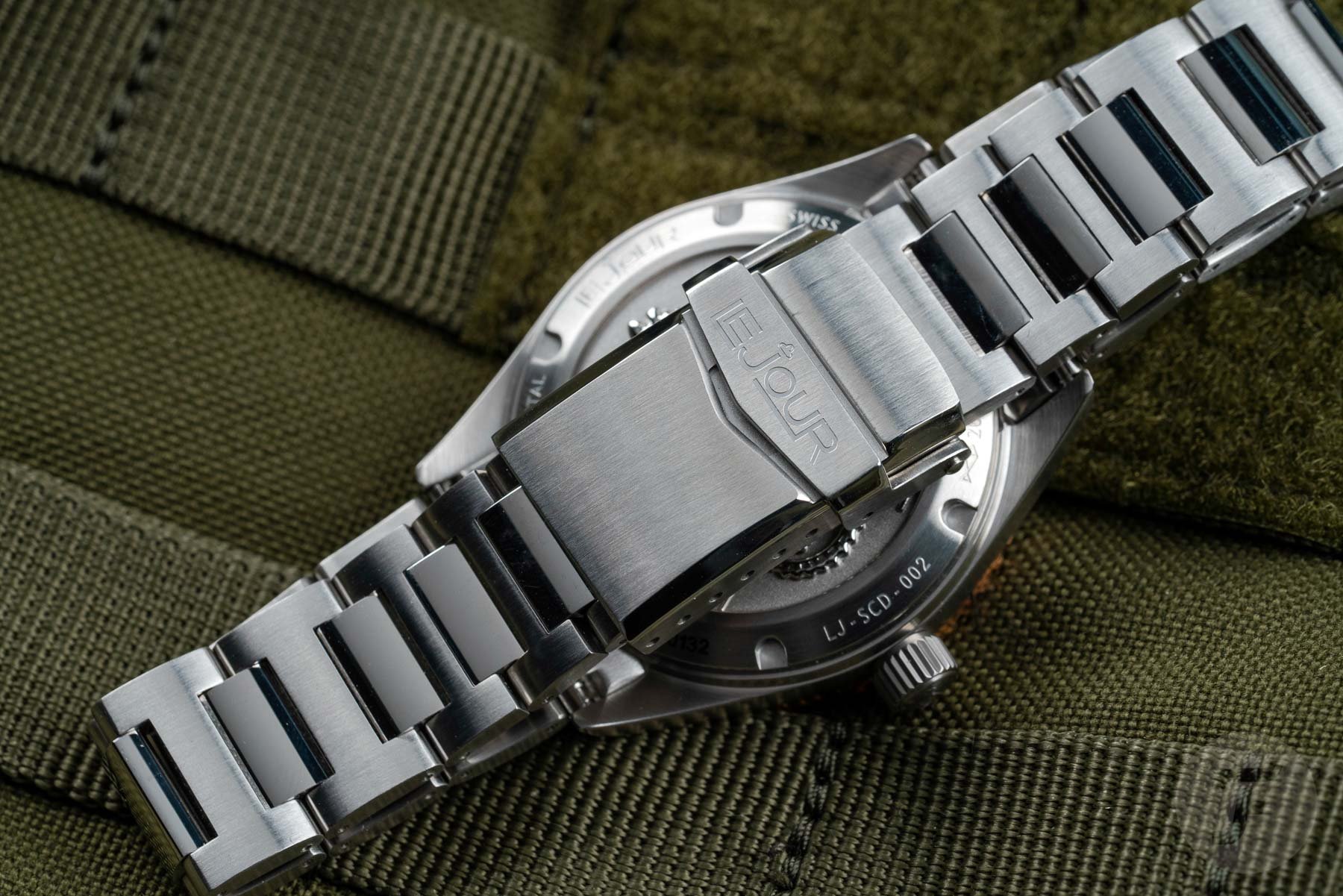
Not following the usual Oyster-style design, the H-links are brushed with polished center links. These match the polished chamfers on the sides of the 22mm lugs. A nice detail, and one of the many small details that give the Seacolt a far more qualitative feel. The 42mm 316L steel case is nice and slim, with downward curving lugs that add to the comfort on the wrist. Another element that complements the retro look is the lack of crown guards. This does mean that the nicely knurled and signed screw-down crown is left unprotected. But as most people who wear these watches won’t actually go diving, it’s not too much of an issue. Including the ceramic bezel and a nicely domed AR-coated sapphire crystal, the watch measures 14mm in thickness. Overall, the side profile of the Seacolt is a clear indication of thoughtful and elegant design.
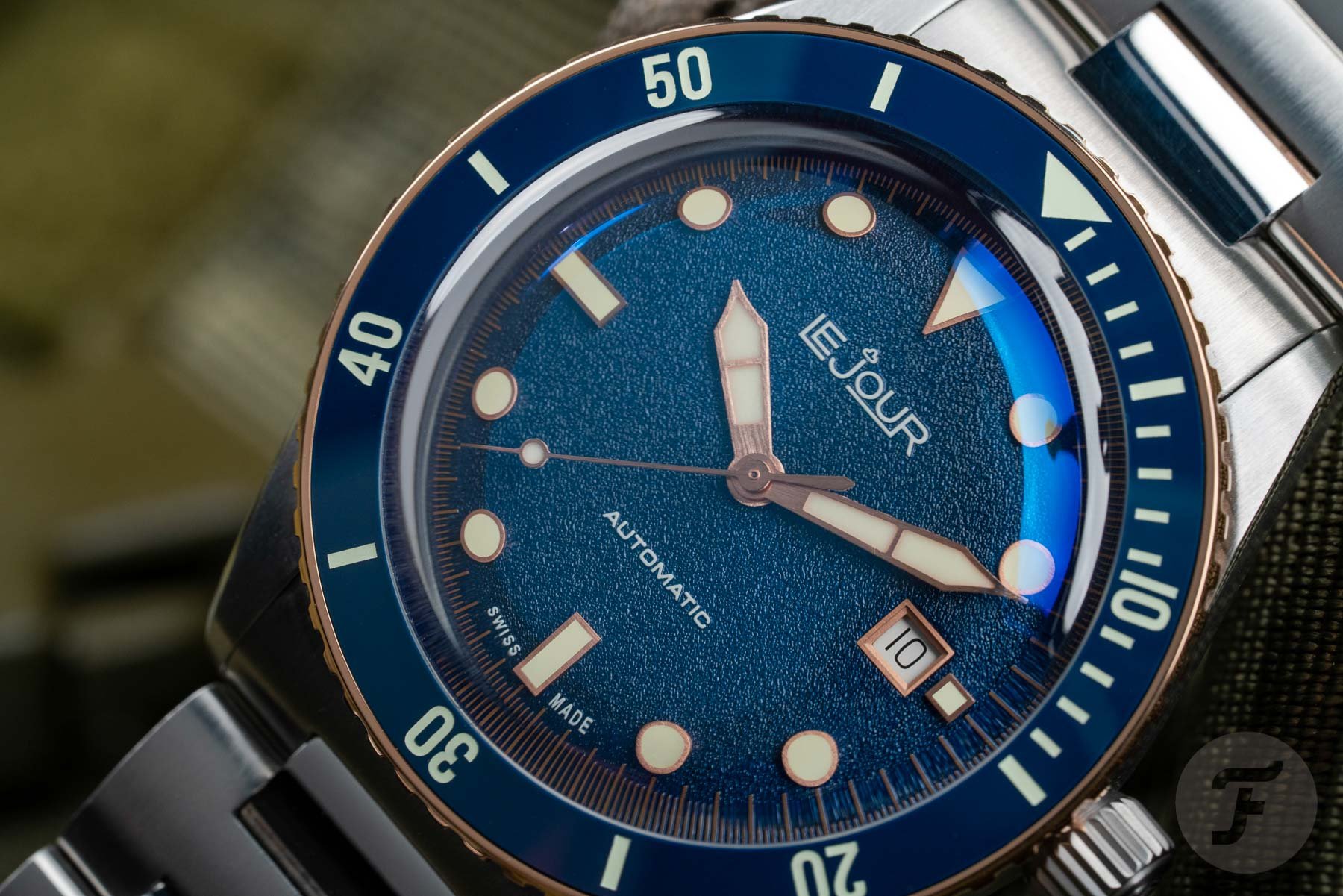
Quality beyond its price point
We’ve already seen a unique bracelet and nicely finished case, both with a distinctive quality feel. So what more does the Le Jour Seacolt offer? Well, plenty actually, like the well-executed case back with a beautifully finished seahorse engraving. The large, on-theme case back engraving is reminiscent of those found on vintage dive watches of the ’60s and ’70s and is a really nice detail. Behind the case back is the ever-reliable Sellita SW-200 movement. I’m always happy to read this in the specs sheet of any watch under €1000, as I have found the movement to perform perfectly well and to be as reliable as you’d expect from a decent Swiss caliber. On the front side, the grippy rose gold edges of the bezel surround a fully-lumed blue ceramic insert.
Equally rose gold-encompassed C3 Super-LumiNova lume plots can be found around the textured blue dial’s edge. The rose gold and lume combination extends to the hands, which are treated with the same luminous material. The date window at 3 o’clock also features a rose gold frame. The final rose gold detail can be found on the minute track. These details remind me of another rose-gold wonder-watch: the Tudor Black Bay 58. The bezel’s edge and dial configuration make me think of the Oris Diver’s Sixty-Five. I don’t know about you, but I think that those are two of the best vintage-inspired dive watches out there. And Le Jour cleverly integrating these elements into its design of the Seacolt makes for an equally charming watch.
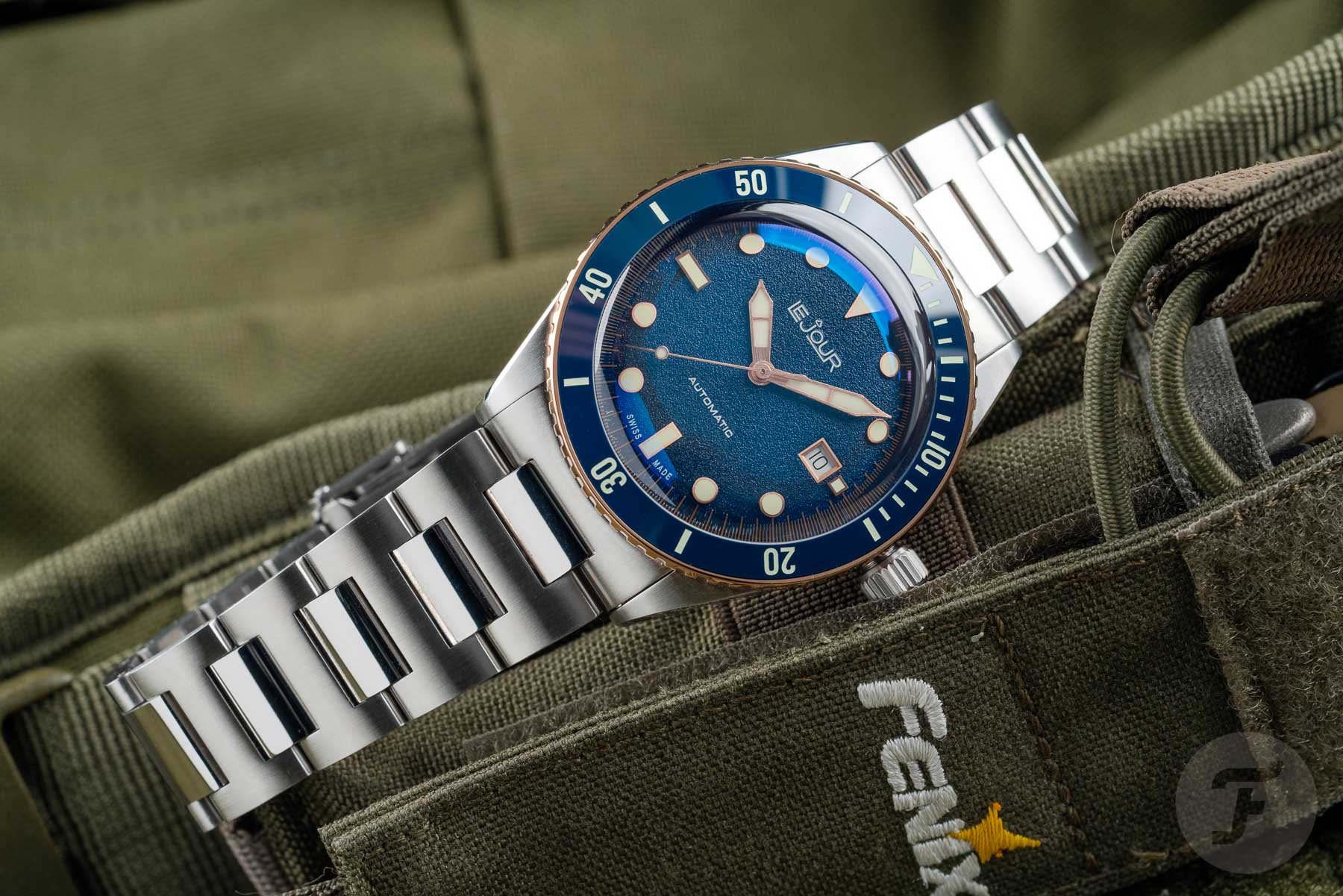
Final thoughts
I must say, I really enjoyed wearing the Le Jour Seacolt. In terms of fit and finish, it exceeded expectations. And when it comes to design and aesthetics, it reminded me of some of the dive watches that I find to be the most appealing out there today. Coming in at a fraction of the price, yet still a capable 200m water-resistant dive watch with some truly impressive lume, this is not one to sleep on. Though the microbrand market presents some fierce competition, I find the Le Jour Seacolt really holds up. Especially as the brand does have a certain history and heritage, bound to appeal to those of us vintage watch lovers out there. And though the new Le Jour is not the old Le Jour, things are looking bright for the brand.
Plus, if you don’t like the blue and rose gold combination, you can always opt for one of the other four variants. Make sure to share your thoughts on the Seacolt in the comments below. Do you like the two-tone style, or would you prefer it with a steel bezel? For more information, check out the Le Jour website.

